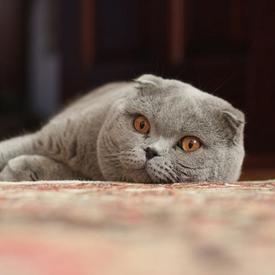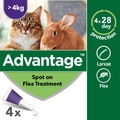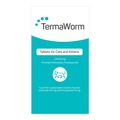
Otherwise known as ‘lops’ or ‘lop-eared’ cats because of their similarity to lop-eared rabbits, the Scottish Fold adopted its current name in 1966. The unique breed emerged quite by chance, when a Scottish farmer first noticed a strange-looking cat with folded-over ears out in the field. The farmer, William Ross, went on to adopt one of the cat’s litter (who also had folded-over ears) and became very fond of its unusual, ‘owl-like’ appearance and amiable temperament. With the help of geneticists, Ross embarked upon a selective breeding program to try and retain the trait, initially using British Shorthairs and local farm cats. The Scottish Fold first appeared in the United States in the 1970s and grew to great popularity. It was registered by the Cat Fanciers Association and competed for championship status in 1979.
Later cats that were introduced to the breeding program include American Shorthairs, Exotic Shorthairs, Persians and Burmese, contributing to the overall look of the Scottish Fold. The Fold is characterised by folded ears, which do not develop until around the 21 week stage, as well as a rounded head and muzzle, wide eyes, a medium-sized body structure, proportioned legs, and a tapering tail. Typically, the eye colour will correspond with the coat. Long and short-haired variations are seen in the breed, although short-haired cats are more common. In terms of coat colour and patterning, a broad spectrum of deviations are acceptable, from solid colours of black, white, blue, red and cream, to bi-colours of calico and tortoiseshell, tabby, mackerel, ticked and spotted. The Scottish Fold has a gentle voice and will communicate softly when it wants your attention.
Breeders and owners have described the Fold as a docile and affectionate cat that forms strong attachments to its human family. The breed has a huge capacity for love and loyalty and enjoys participating in activities around the home. Ever curious, the Scottish Fold likes to be kept engaged and enriched with interactive toys, scratching posts, and plenty of space and companionship throughout the day. Whilst being devoted (usually to one person in particular) they are not demanding and can cope for short periods being left alone. On average, a healthy adult Fold will weigh 9-14 pounds, with a typical life expectancy of 15 years.
Because of health complications that can occur when two cats with the gene for folded ears are mated, this is usually avoided by reputable breeders. Aural complaints are observed in Scottish Folds, especially those with the dominant gene. Besides this, polycystic kidney disease is well documented, as well as hypertrophic cardiomyopathy, the most common type of heart disease in cats. Skeletal disorders are also observed with prevalence, and this is one of the main complications when it comes to breeding two cats with the folded-ear gene.








From Merseyside, United Kingdom
scottish folds are very human like cats they follow and greet you when you come home they sit in very funny positions too and have quite a smooth silky coat so dont loose hair much :-) they are also very playful